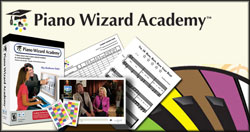In the third video of our Elements Of Music series, Music Wizard founder Chris Salter discusses how music structures like to be "round".
Topics include:
a) Rhythms repeat and different parts of the same length can be represented usefully as concentric circles on a log. Some very elaborate rhythms like Classical Indian music will have circles within larger circles like those created by the children's drawing game Spirograph or the inner workings of gears on a clock for second, minute and hour.
b) Harmonic patterns can be cyclical like typical Blues pattern.
c) Tonally no matter how far developmentally the harmonies go they like to come "home" to the starting tonality or key. The exceptions prove the "rule".
d) Melodic song forms tend to circle back to repeat the beginning melody.
Some examples from http://www.smccd.edu:
i) "AAA" Strophic – A melody is repeated, each time with different words. Sheila Davis calls this “AAA” form, since we often get just 3 repetitions in popular music, although many repetitions may be used.
ii) "ABABAB" Verse-Chorus or Verse-Refrain – a series of verses (changing lyrics) alternates with an unchanging refrain. The refrain is often called the “chorus,” because it is common for verses to be sung by a soloist and the soloist to be joined by multiple voices (the “chorus”) singing in the refrain.
iii) "AAB" Blues – 12-bar most common; AAB pattern in lyrics and melody (often a “question-question-answer” pattern). Three 4-bar phrases. Blues variants – 8-bar, 16-bar; balanced phrases (music and lyrics).
iv) "AABA" 32-bar AABA form. In songs from the 20s, 30s & 40s, many songs have rambling introductions which lead to 32-bar AABA structures. The A phrases often come to harmonic closure; the B or bridge phrase often provides harmonic, rhythmic, melodic or textural contrast. Often extended or expanded (for example, AABAA or AABABA) or with a coda Allen Forte’s Listening to Classic American Popular Songs explores this form in detail.
v) Through-Composed - Some songs, particularly in the art-song tradition (epitomized by Schubert), are “through-composed,” meaning that there are no unvaried repeats of musical ideas. This is very rare in popular music. Again the exception proves the rule.
[et_bloom_inline optin_id="optin_5"]


